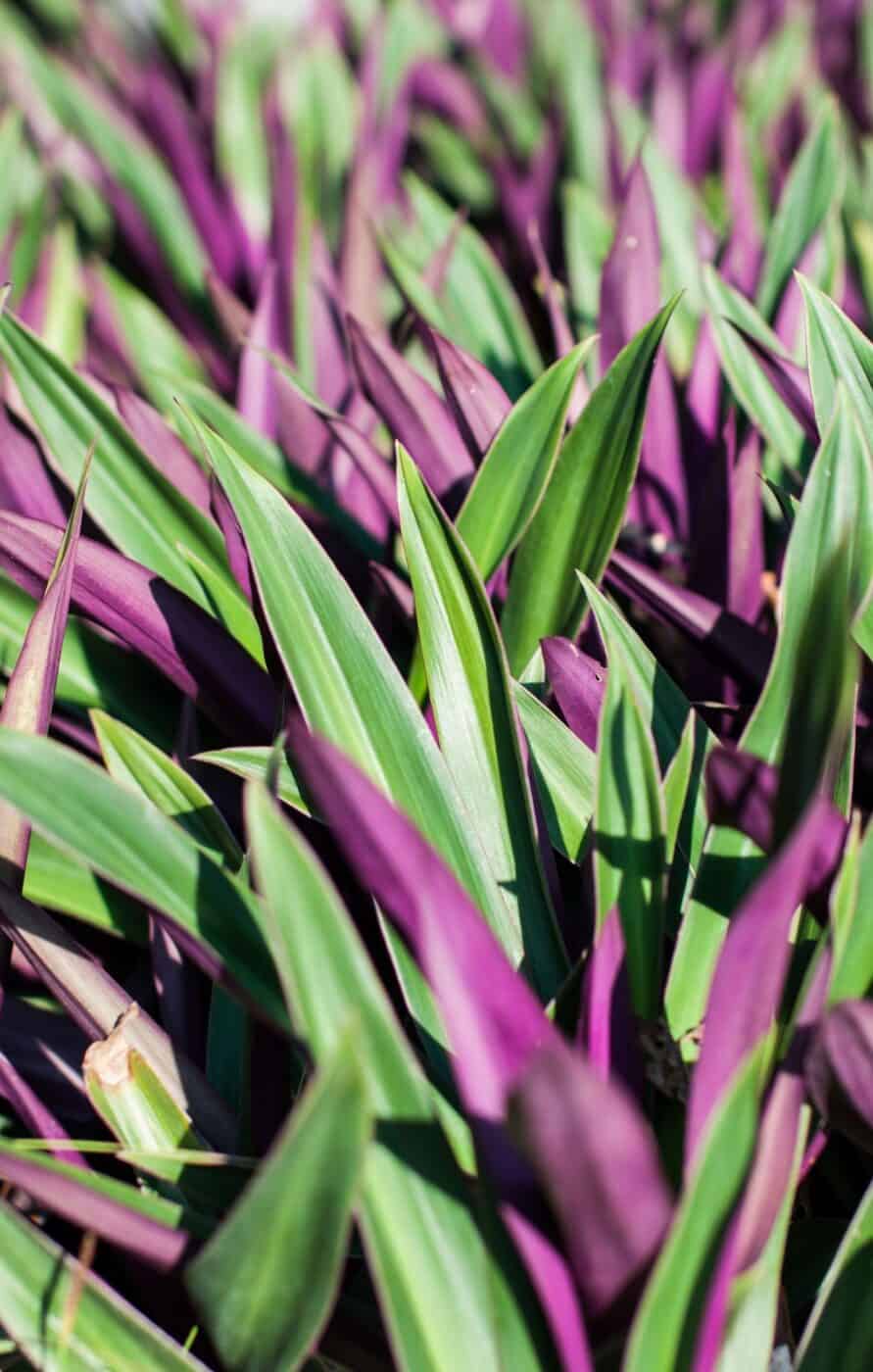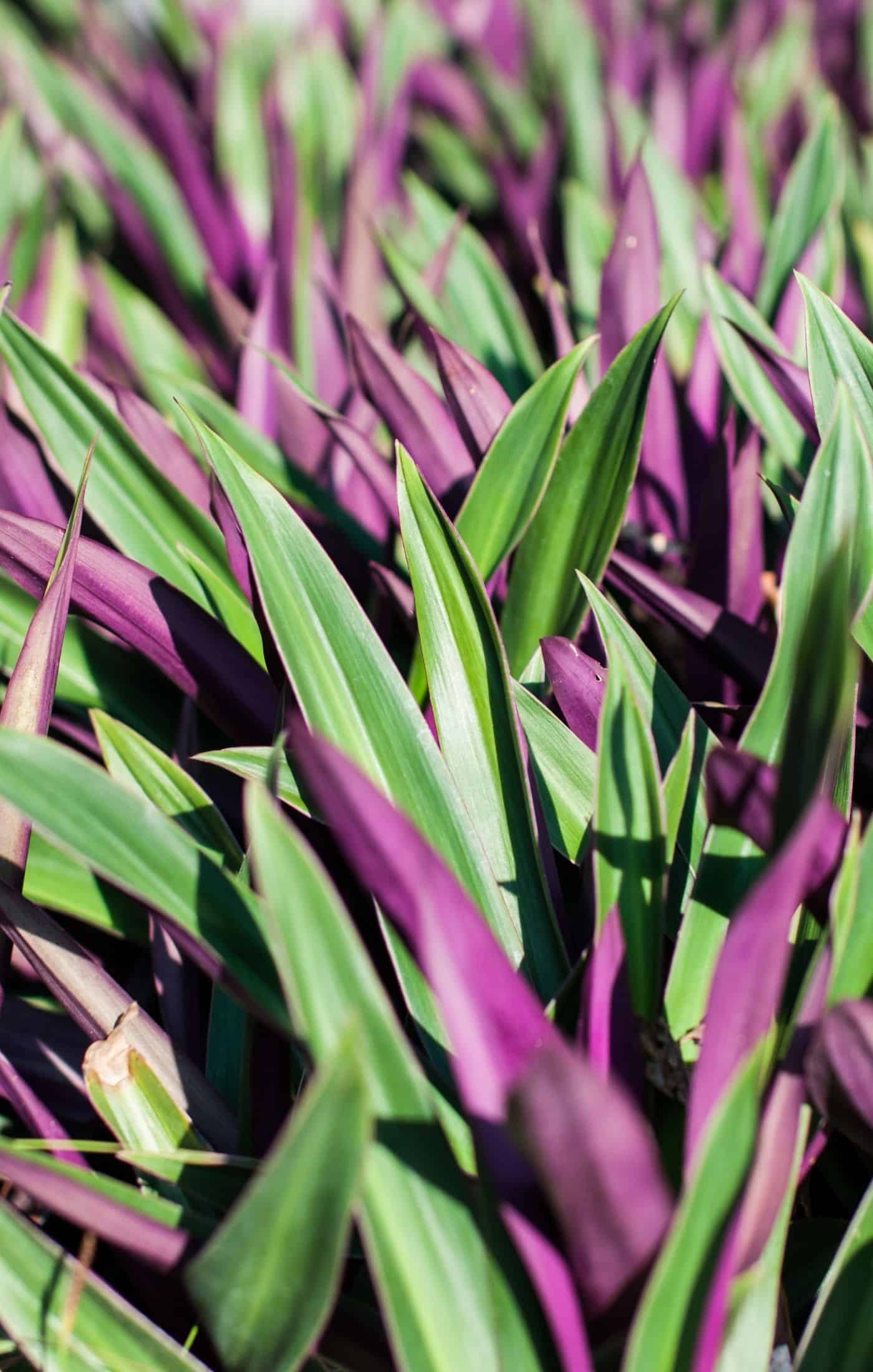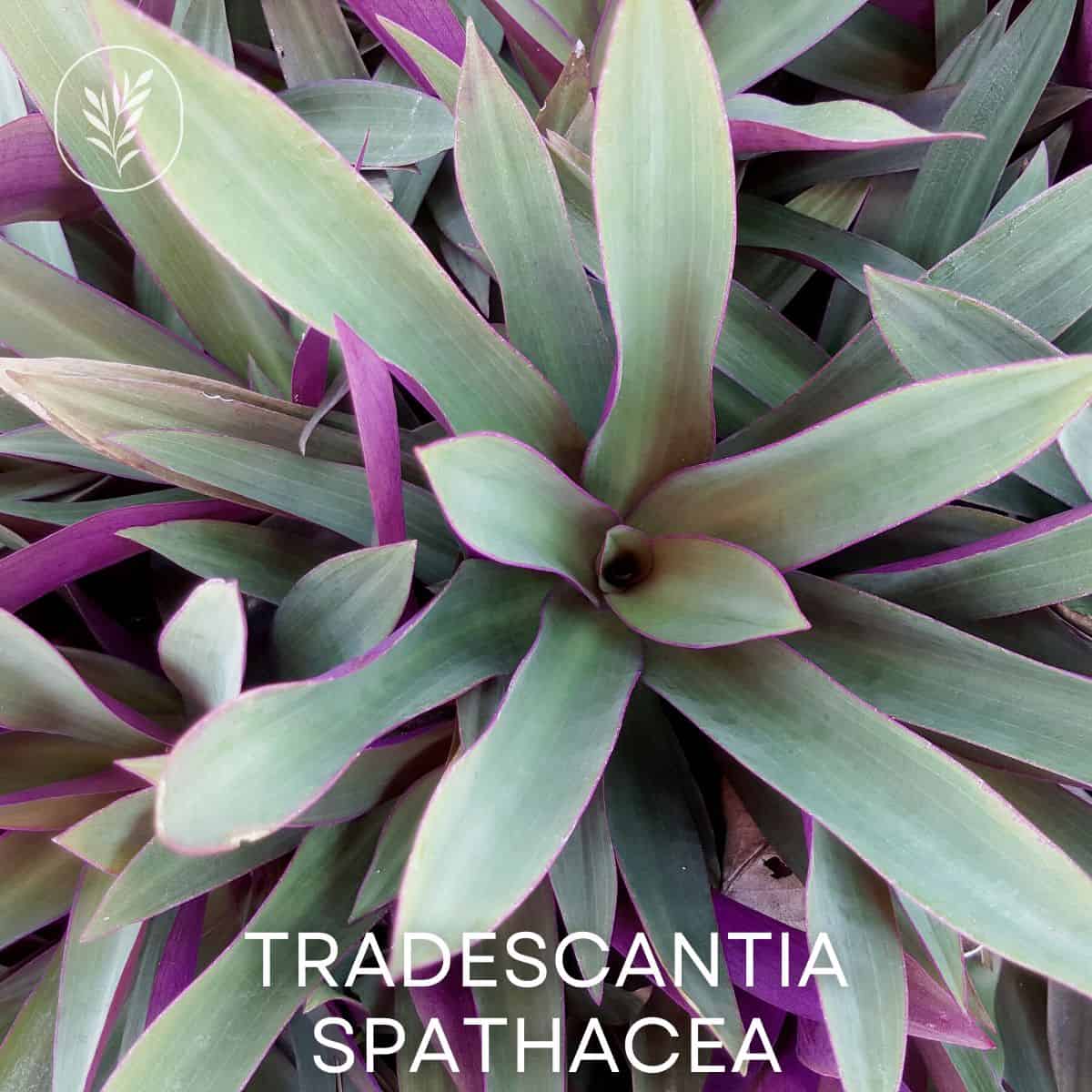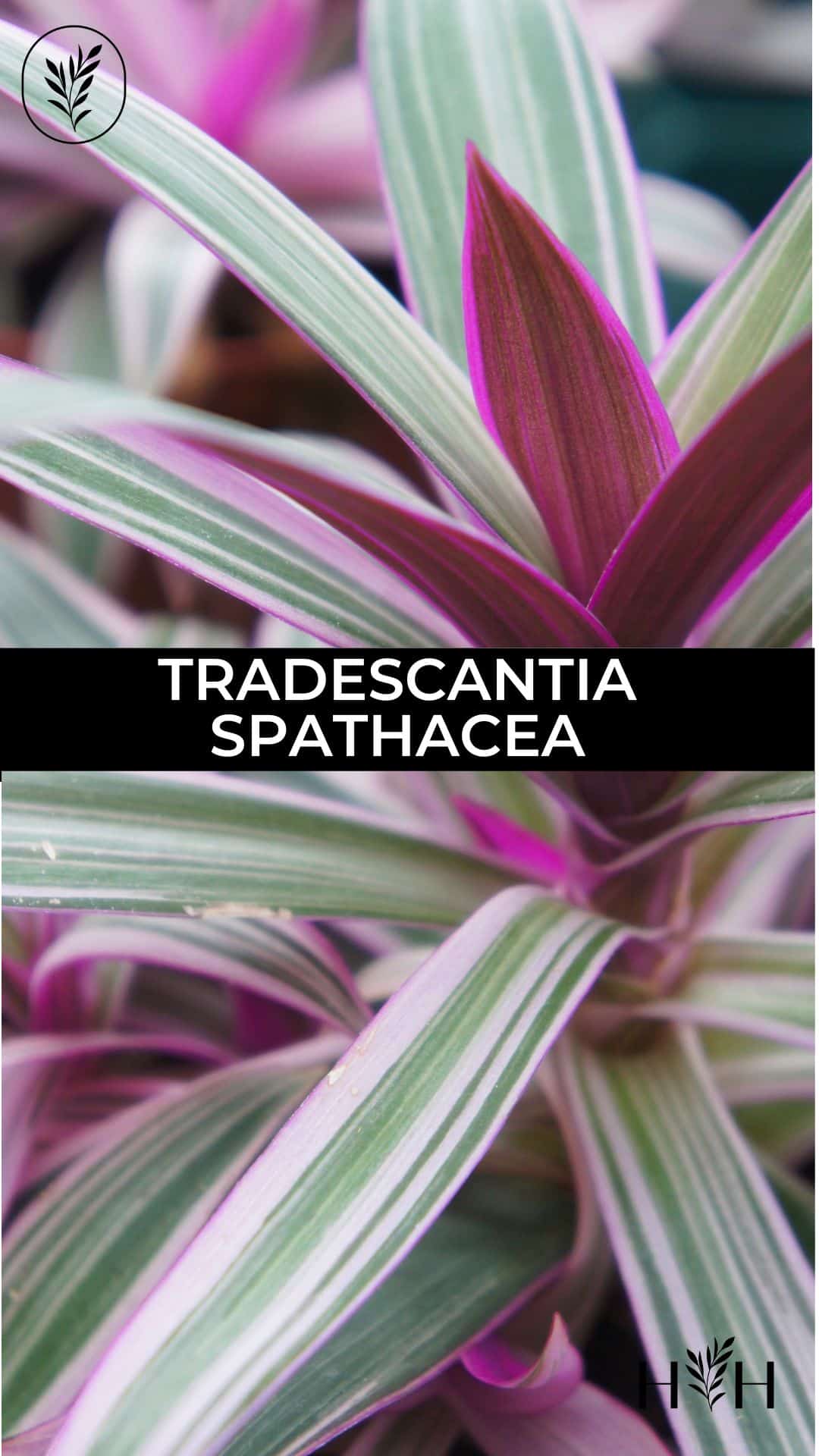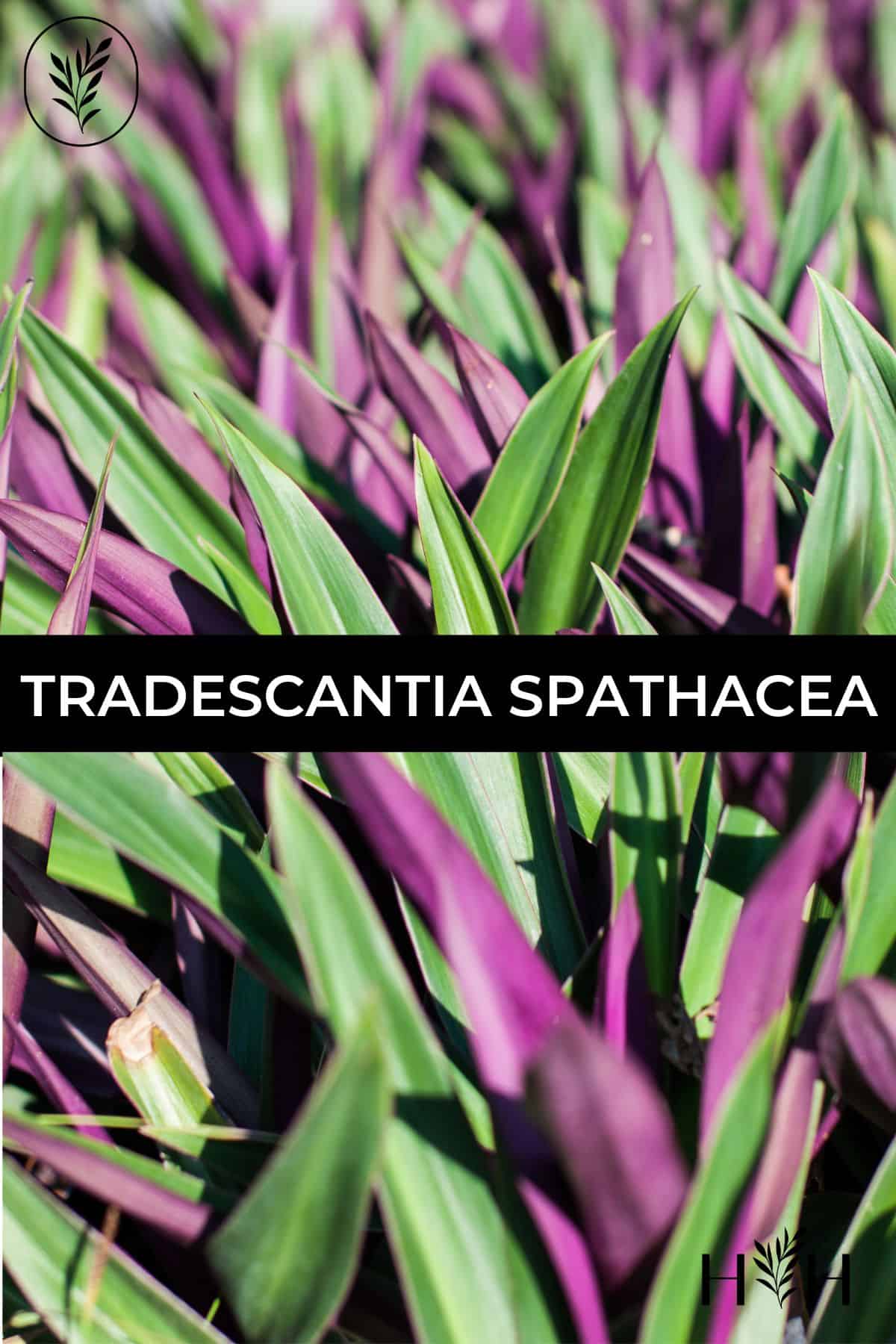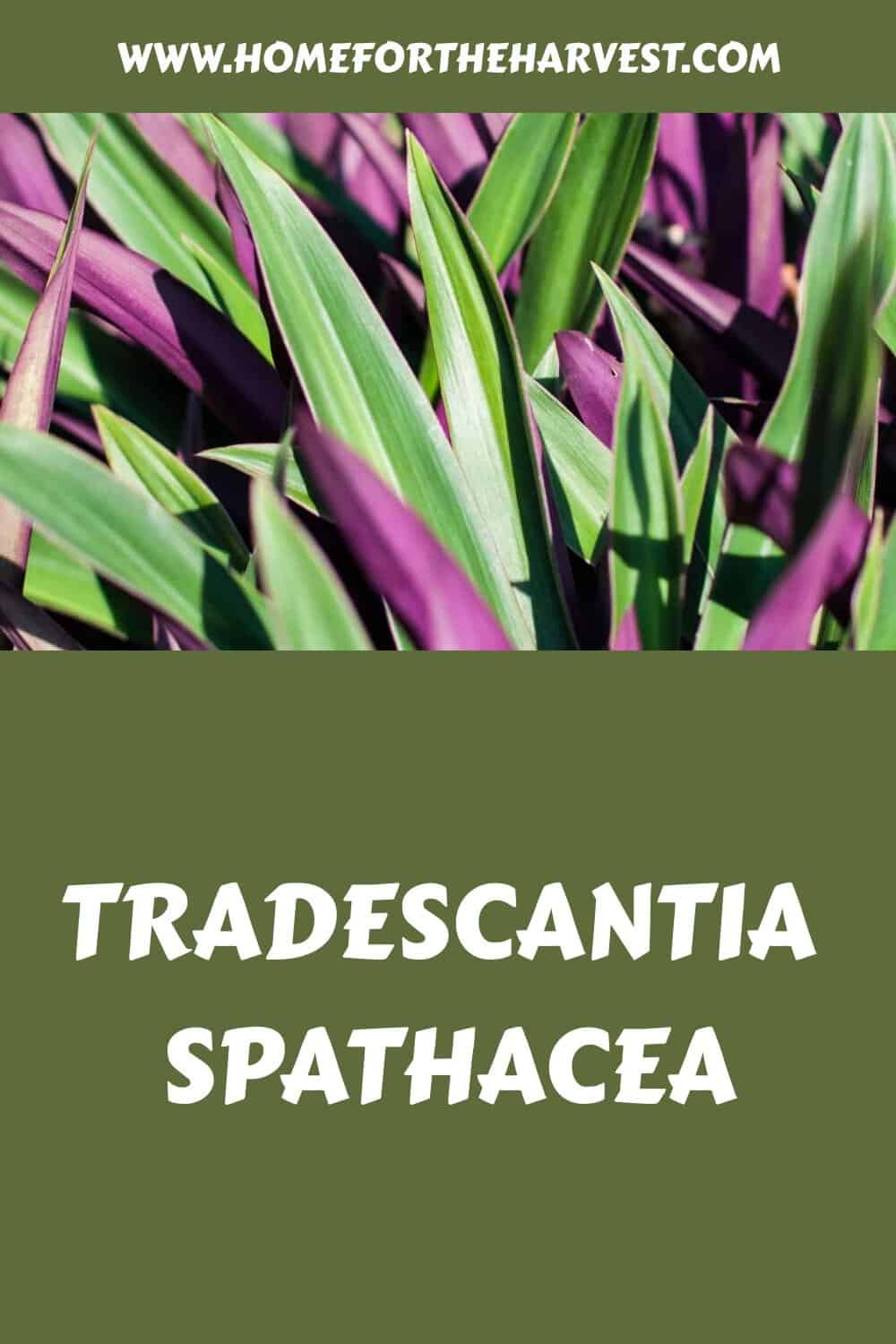Looking for a colorful houseplant that doesn’t require a lot of upkeep? Look no further than Tradescantia Spathacea!
Tradescantia Spathacea, the Moses in the Cradle plant, is a herbaceous perennial plant native to Mexico that’s commonly grown as a houseplant. This low-maintenance tropical is the perfect way to bring some colorful foliage into your home. The long green and purple leaves are a beautiful contrast to the greenery of other popular houseplants. And as a bonus, Tradescantia Spathacea is very low maintenance and easy to grow.
So, keep reading if you want to buy a Tradescantia Spathacea or currently own one. This article will cover the basics of owning and caring for a Tradescantia Spathacea so you can help your plant thrive in your home!
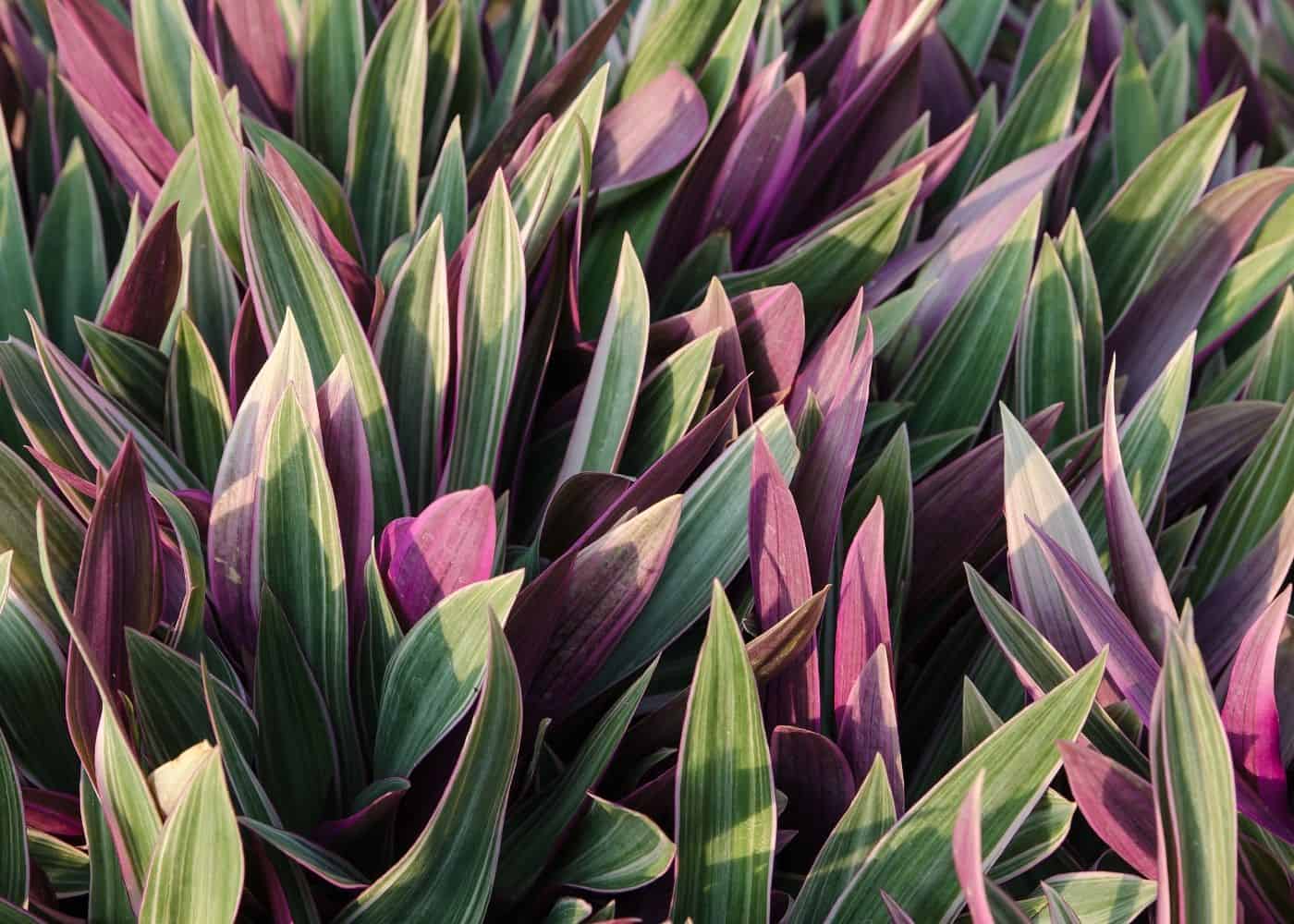
Tradescantia spathacea basics
Tradescantia spathacea, also known as Boat Lily, Moses in the Cradle, Rhoeo Spathacea, and Oyster Plant, is a green and purple foliage tropical houseplant that makes a beautiful addition to your home! In addition, this vibrant houseplant is super easy to care for, making it a favorite amongst both beginner and seasoned gardeners!
Moses-in-the-Cradle Plant (Tradescantia spathacea) is native to understory environments in southern Mexico, Belize, and Guatemala. These low-growing plants act as groundcovers, reaching about 1′ (30 cm) tall as they spread across the soil. Tradescantia spathacea grows outdoors in USDA Zones 9-12, and does not survive frost or freezing conditions.
Tradescantia spathacea plants are best known for their colorful foliage. The leaves tend to have a dark green shade on the top and a glossy bright purple underneath, but there are also specialty cultivars with white and purple stripes on the top of the leaves. The leaves are long and skinny with a pointed oval lance-type shape. Leaves tend to grow in rosettes near the base of the plant and point upward, in contrast to many other Tradescantia plants that have more of a trailing habit.
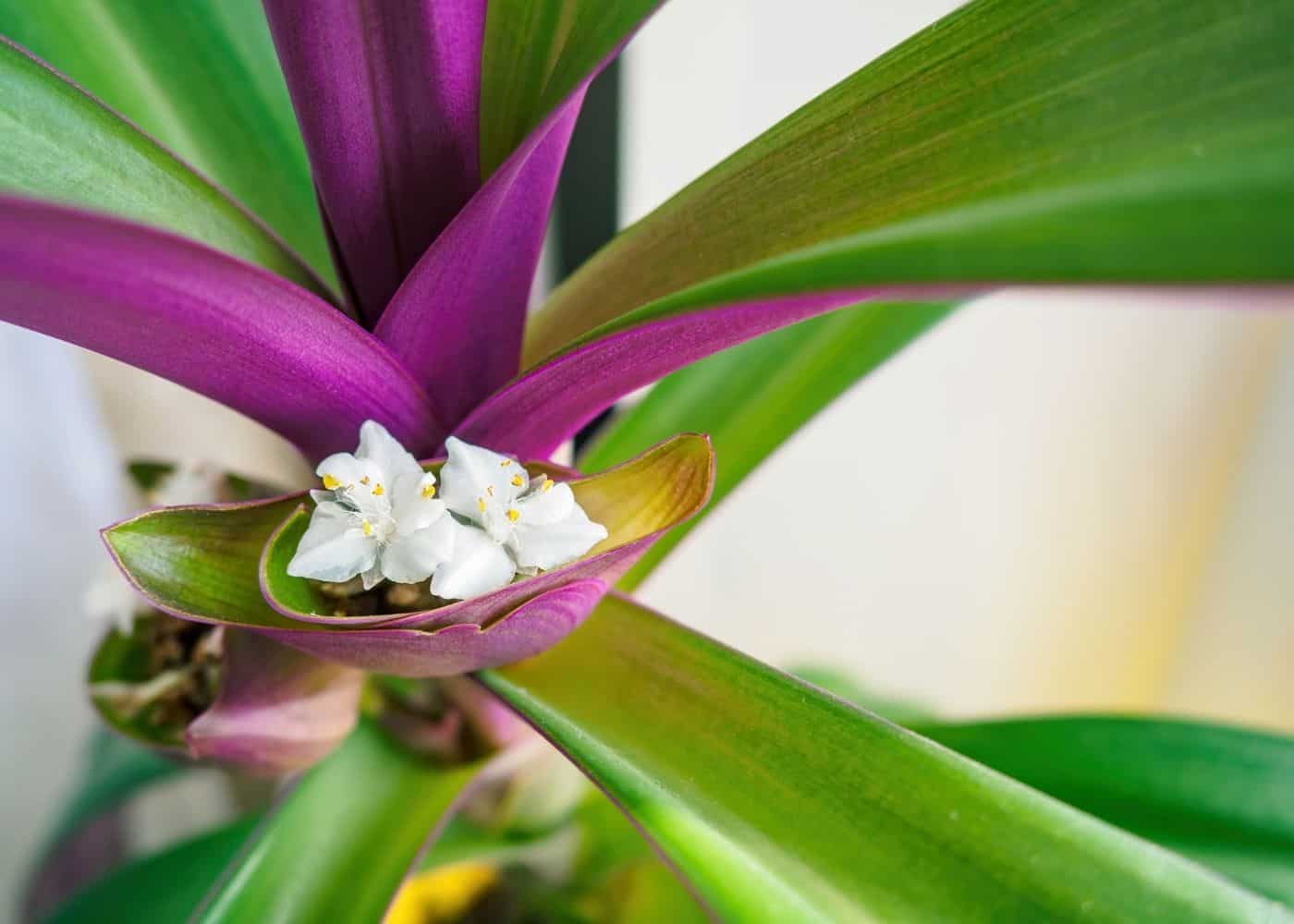
Buying Tradescantia spathacea plants
You can purchase Tradescantia Spathacea at most garden centers or an online plant store. These plants are usually stocked in early spring but may be available year-round from larger shops or online.
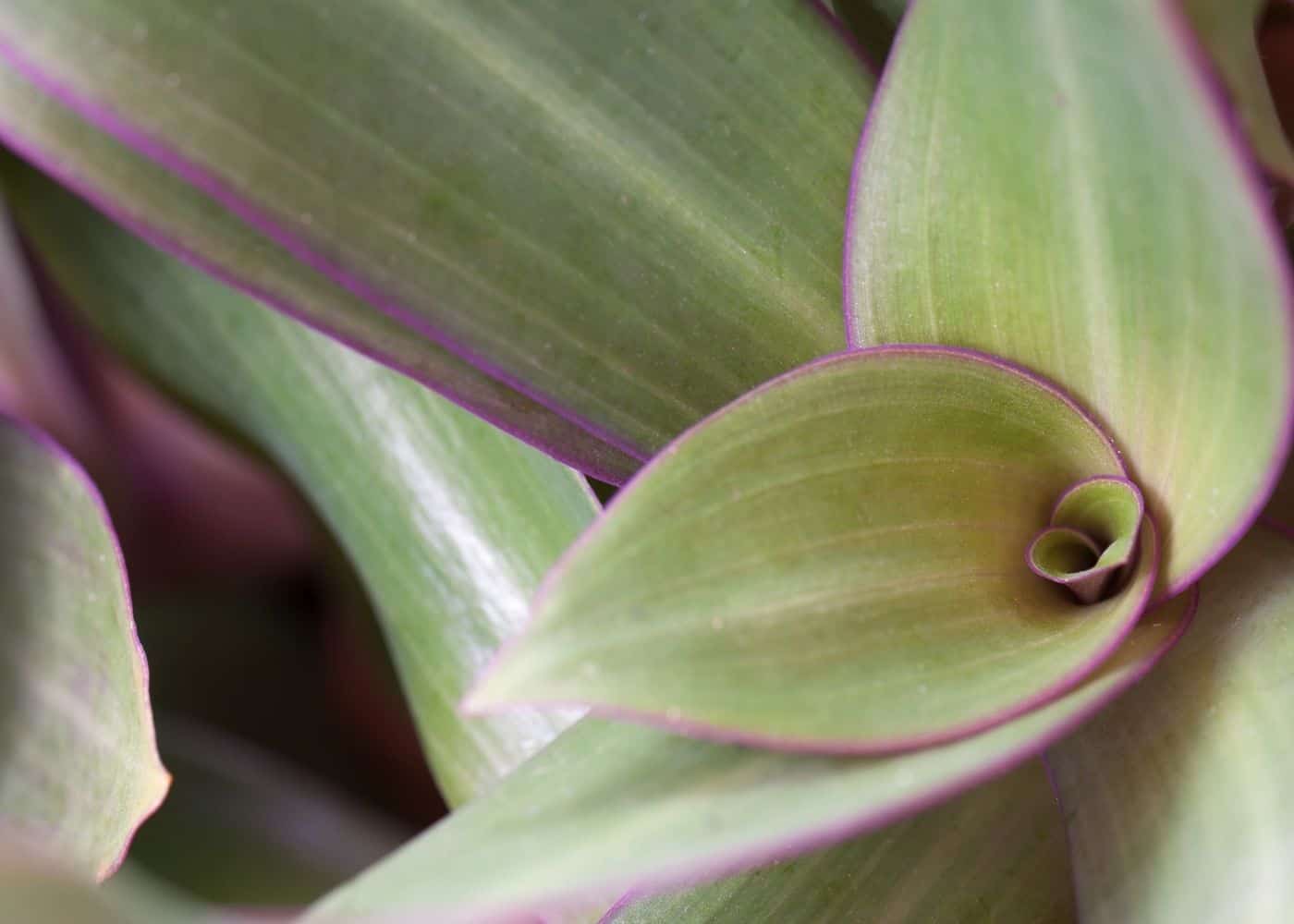
Tradescantia spathacea plant care guide
Tradescantia spathacea plants are among the easiest houseplants to care for. As long as they are watered consistently, have access to sunlight, and are in a spot with good air circulation that’s not to dry, they tend to thrive.
Watering Tradescantia spathacea
Although Tradescantia Spathacea hails from Central America in relatively humid environments, this plant does best if you let the soil dry out slightly between each watering. Before watering your plant, check the top layer of soil for dryness with your finger. If the top half of the potting soil is dry, thoroughly water your plant and let the water drain completely. Make sure that excess water is draining out the drainage hole in the bottom of the planter. Try to avoid overwatering as Tradescantia Spathacea doesn’t do well in soggy conditions.
When the plant is most actively growing in the summer, you can keep the soil slightly moister than in the winter. This is because the soil doesn’t dry out as quickly during winter, so you don’t need to water it as often. The plant is also relatively dormant in the winter when days are short, and the plant, therefore, does not need as much water. In addition, overwatering during the winter can cause root rot because the soil sits in stagnant water.
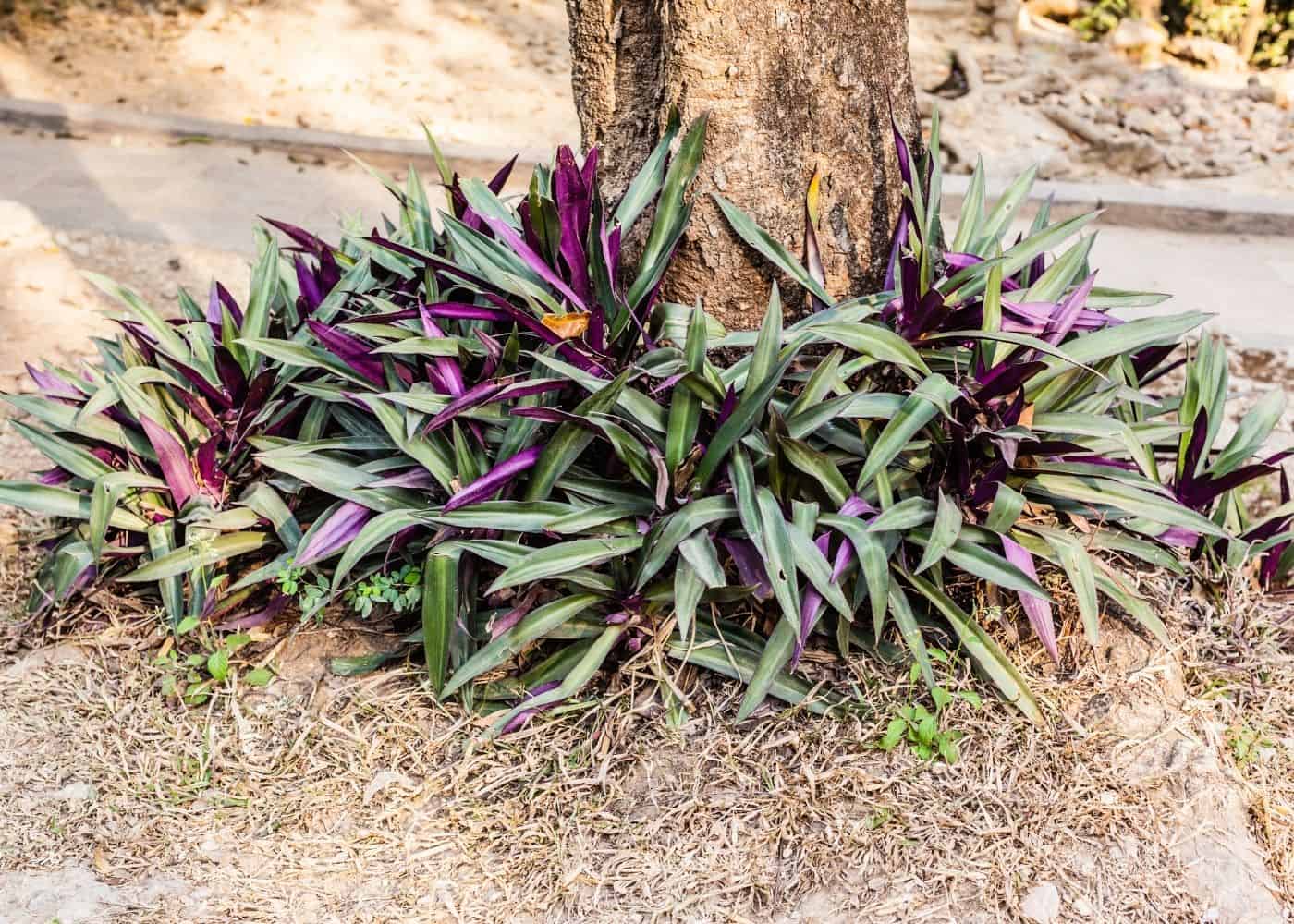
Light requirements for Tradescantia spathacea
Tradescantia spathacea thrives with bright, indirect light. For example, placing your plant in an area with Eastern or Western exposure should give this plant plenty of sunlight each day. If you don’t give your plant enough light, its leaves may fade, and its stems may become leggy. On the other hand, giving your plant too much harsh direct sunlight can cause foliage to burn and dry out the leaves. So, it’s crucial to maintain adequate indirect light for this plant to thrive in your home.
Fertilizer for Tradescantia spathacea
Fertilize your Tradescantia Spathacea Plant during its active growing season from spring to fall. There are a number of houseplant fertilizers that work well for Moses in the Cradle Plant. Some are dry granular products while others are liquid concentrates that can be added to your watering can. Dry granular houseplant fertilizers tend to be slow-release and last for a couple of months, while liquid fertilizers may be applied every couple of weeks depending upon the application instructions on the specific product.
Humidity & temperature for Tradescantia spathacea
Tradescantia spathacea thrives in average humidity levels, so there’s no need to buy a humidifier or mist the leaves. However, you can always place your plant on a pebble tray if you notice the leaves become crispy and brown. As for temperature levels, Tradescantia Spathacea thrives in temperature levels of around 64-80ºF. Although this plant is low-key, it doesn’t like drafts, so make sure you place it in an area with a consistent temperature range.
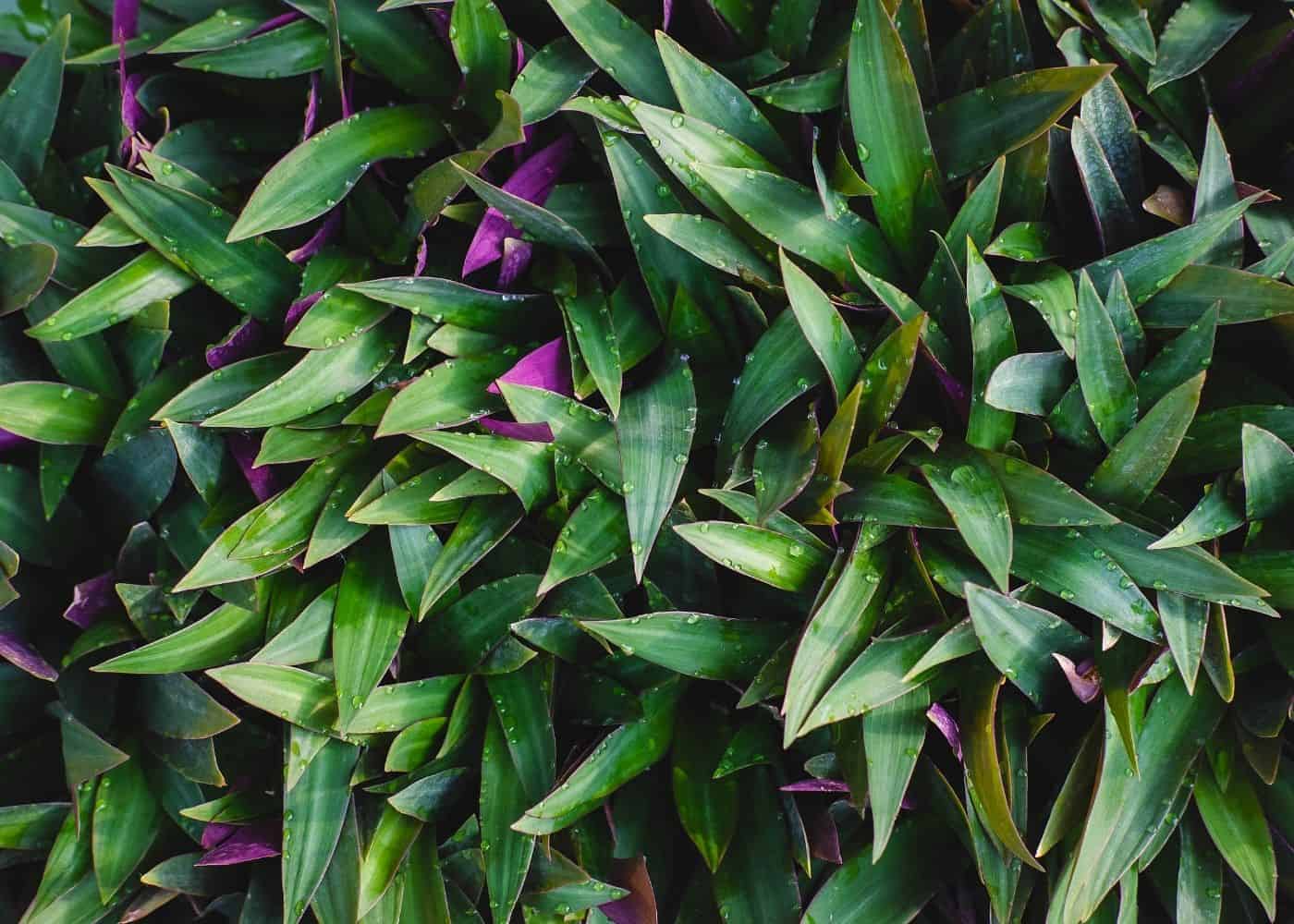
Repotting Tradescantia spathacea
Tradescantia spathacea plants tend to grow quite quickly and are generally repotted every year or two. The best time of year to replant them is in the spring. Small plants can be up-potted in a larger pot, about 2″-4″ wider. Larger plants can be pruned or divided into smaller sections and then repotted with a fresh potting mix.
Potting soil for Tradescantia spathacea
Tradescantia spathacea isn’t picky about soil. Therefore, the only requirement for this plant is well-draining soil as this plant doesn’t like to get soggy. The best well-draining soil combination is a mixture of coco coir or peat moss and perlite. This combination provides the plant plenty of moisture to thrive but still allows water to drain out properly.
Planter pots for Tradescantia spathacea
Tradescantia spathacea can be grown in a variety of different planter pots. The one important characteristic is that the pot must have good drainage. Look for a pot with a large drainage hole or multiple drainage holes. Terra cotta pots work well but they will require watering more often than plastic pots.
Propagating Tradescantia spathacea
Propagating Tradescantia Spathacea is extremely easy. You can propagate this plant with three methods: stem cuttings, root division, or growing from seed. Let’s look at each method in detail:
Stem cuttings
Although this plant might not look like it has stems, it does! The stems are located at the very base of the leaves. To propagate Tradescantia Spathacea:
- Use a pair of clean, sharp scissors and cut off a few healthy stems from your plant.
- Cut the base of each stems right above the node. Cutting right above the node allows nutrients from the soil to enter into the stem and establish roots, creating a new plant.
- You can dip the stems in rooting hormone powder if you like, but it’s not necessary.
- You can propagate Tradescantia Spathacea in water or soil.
Root division
You can propagate a new Tradescantia Spathacea Plant from the root division. Root division requires dividing the plant from the root ball into multiple sections. Each section should contain a few roots to grow into a new plant. Divide your plant into as many new plants as you want and repot the divided sections into smaller pots with fresh potting soil. Water thoroughly.
Growing from a seed
You can propagate a new Tradescantia Spathacea Plant from seed if the flowers have been pollinated. If your plant is indoors, you’ll have to pollinate by hand using a paintbrush. Once seed pods form, you can harvest and plant them in moist coco-coir-based seed starting soil. Take the seeds and place them under a humidity dome for optimal results.
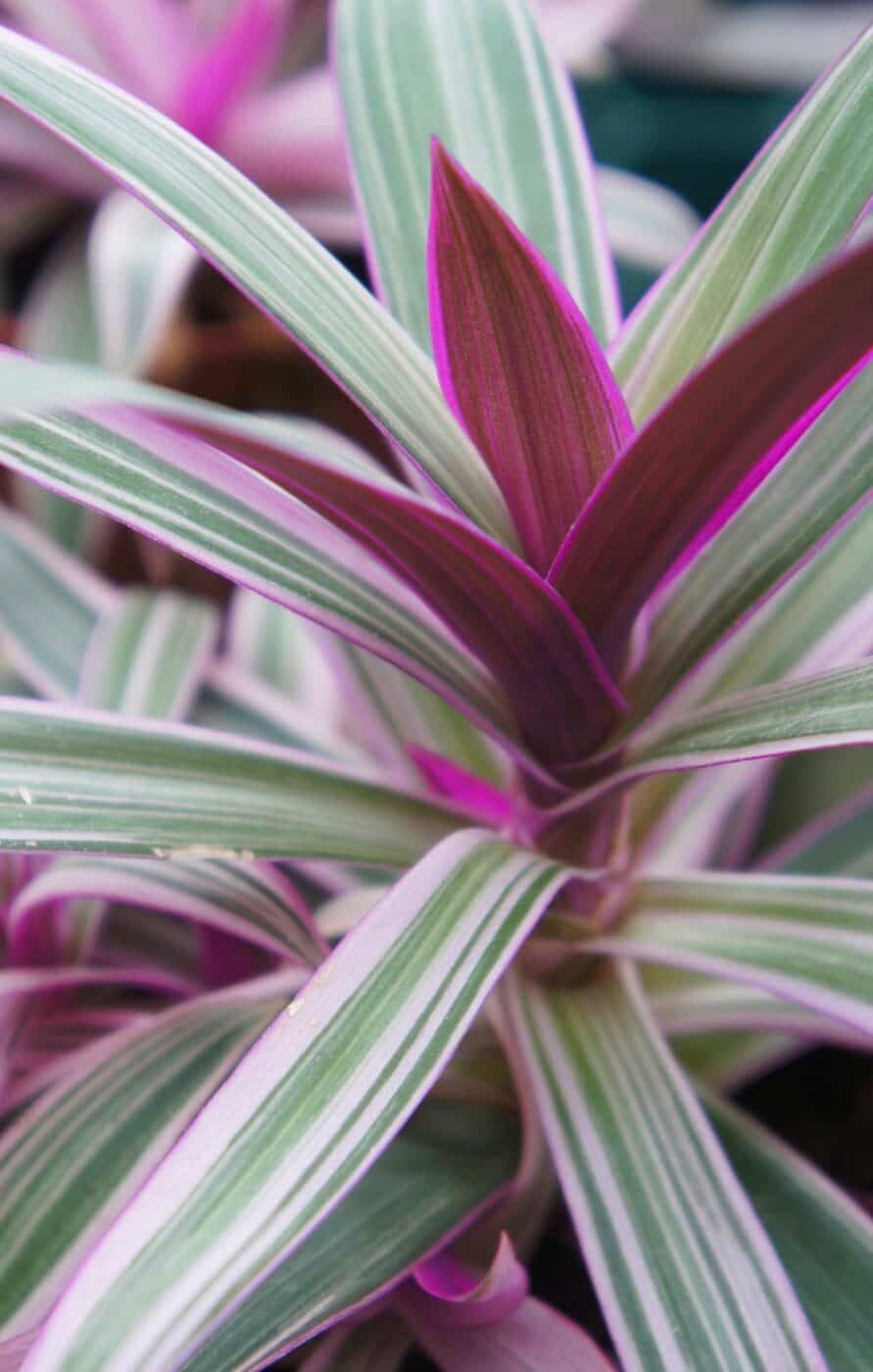
Common pests affecting Tradescantia spathacea
Scale, mealybugs, spider mites, and whitefly are common pests affecting Tradescantia spathacea. Each of these pests sucks the sap from your plant’s leaves. However, you can easily prevent and treat them with a couple of methods. You can deter these pests by properly caring for your plant, ensuring it’s watered correctly, is receiving enough sunlight, and is fertilized correctly. That said, every once in a while a pest crops up and must be dealt with.
If your plant already has an infestation of one of these pests, quarantine your plant, so the pests don’t spread to your other plants. Then, use a gentle organic insecticide spray such as insecticidal soap, neem oil, or a specialty product to eradicate the pests. Most organic sprays can be reapplied on a regular basis to ensure the eradication of pests.
Common diseases affecting Tradescantia spathacea
Tradescantia spathacea is a relatively hardy plant that isn’t affected by any significant diseases. However, overwatering can lead to root rot. Root rot starts when roots are wet and can lead to floppy stems and leaves and an unhealthy-looking plant. This is why it’s important not to overwater your plant and let the water drain thoroughly from the bottom to ensure the roots aren’t sitting in water.
If your plant appears to be suffering from root rot, first move the plant into an area with bright indirect light and excellent air circulation. If the plant looks particularly bad, take it out of the pot, clean the pot, and repot it into the fresh clean dry potting mix. Let the plant air out for a few days before watering. During the first watering, double-check to make sure excess water drains freely out of the bottom of the pot. Allow the pot to drain fully in the sink before placing it back in a bright location with adequate air movement.
